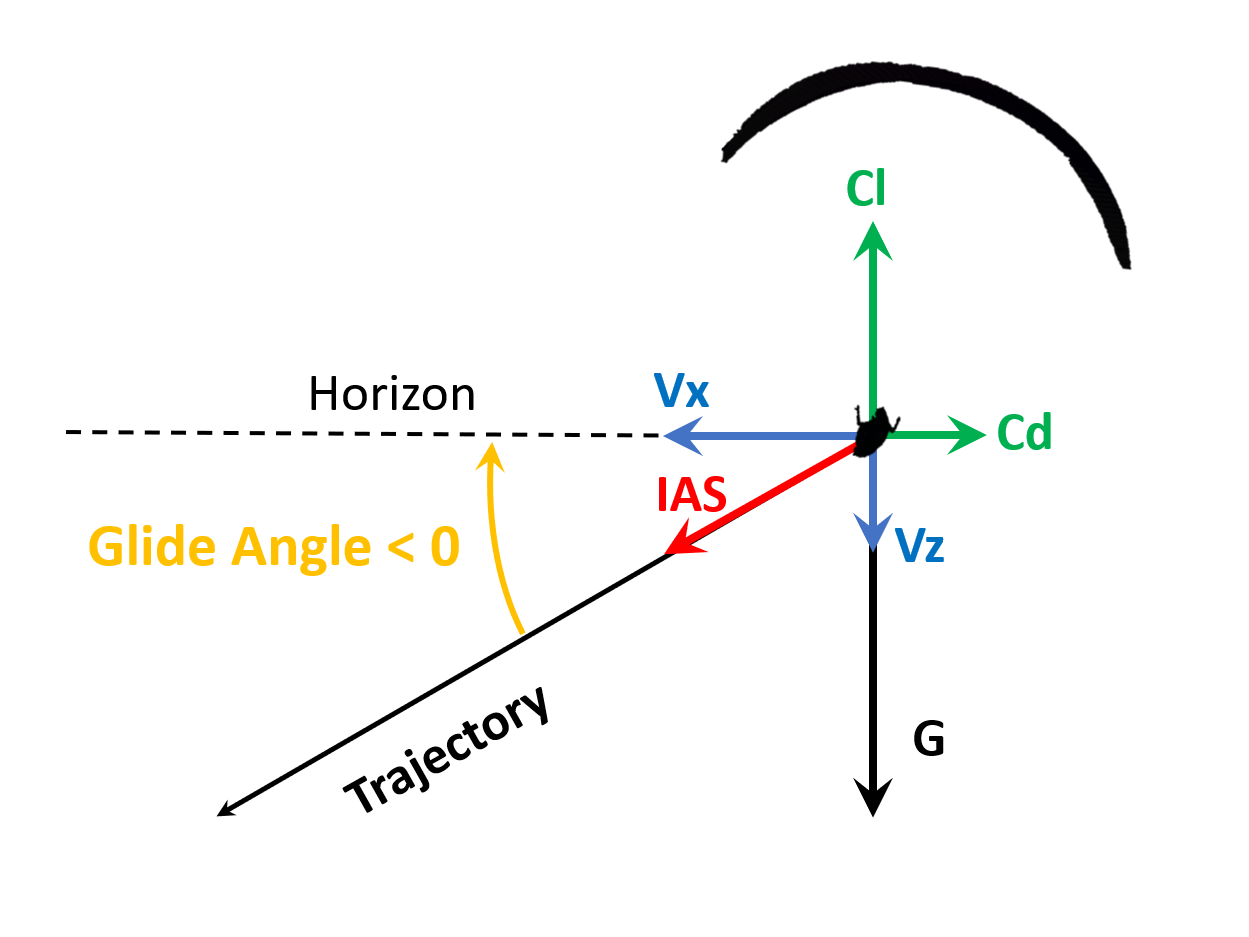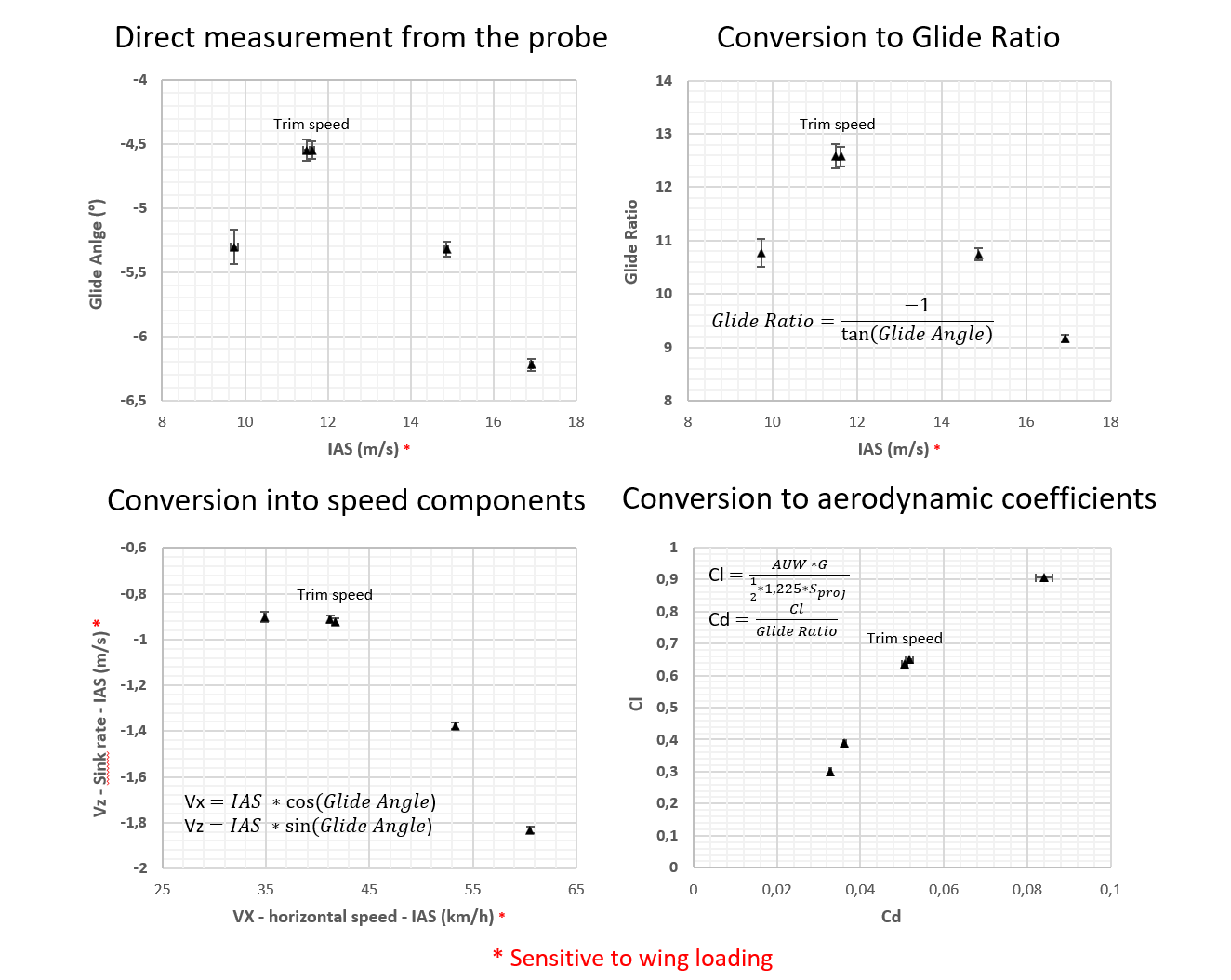What’s the polar and how to read it ?

The polar of an aircraft is its aerodynamic characteristic. It provides the relation between lift and drag. These are generally presented in the form of aerodynamic coefficients: Cl for the lift and Cd for drag. The performance is given by the glide ratio defined as Cl/Cd. The higher the ratio, the more efficient the aircraft.
Using the flight speed and the geometric characteristics of the glider, these coefficients can be converted into speed which are more useful for the pilot.
- Vx = for the horizontal speed
- Vz = for the sink rate
- Glide ratio = Vx/Vz
However, these speeds depend on atmospheric conditions (air density) and wing loading. To get rid of the atmospheric conditions, a standard atmosphere having a density of 1.225 kg/m3 is used. This corresponds to the so-called Indicated Air Speed (IAS). The True Air Speed (TAS) can be computed by using the actual air density, which depends on altitude, pressure and temperature.
By definition, the glide ratio is not affected by atmospheric conditions nor wing loading (this does not mean that a wing is unaffected by wing loading).
The Vector probe makes a direct measurement of the glide angle as well as the total air speed. For unpowered aircraft in stabilized condition, the glide ratio is directly linked to the glide ratio.
The usual way of plotting the results of the probe is therefore the glide angle as a function of the IAS speed.
It is then possible to calculate and plot the IAS speeds Vx and Vz by trigonometry. However, if we want to use this plot to compare two wings, it is necessary to have a similar wing loading. If this is not the case, it is preferable to use the previous plot where only the speed depends on the wing loading. It is also possible to go back to the aerodynamic coefficients for a fairer comparison.
